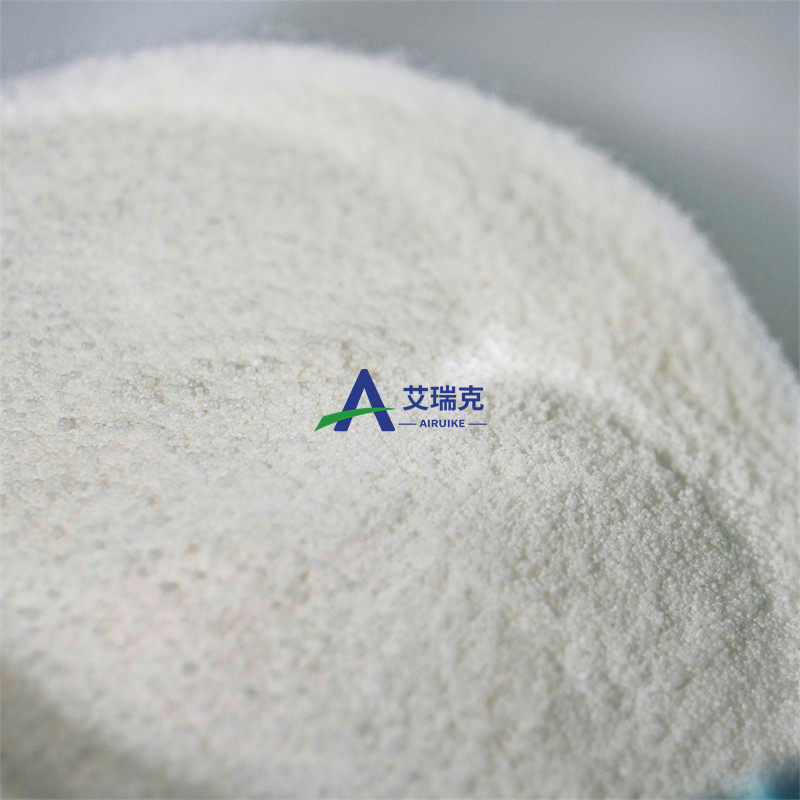The latest research progress of neural stem cells (phase 4)
-
Last Update: 2019-10-26
-
Source: Internet
-
Author: User
Search more information of high quality chemicals, good prices and reliable suppliers, visit
www.echemi.com
October 26, 2019 news / Bio Valley bio on / - -- neural stem cell refers to a cell group that exists in the nervous system and has the potential to differentiate into neurons, astrocytes and oligodendrocytes, so as to generate a large number of brain cells, and can self renew and provide a large number of brain tissue cells It should be noted that different types of neural stem cells produce different types and distributions of progeny cells in all neural tissues, such as brain and spinal cord The therapeutic mechanism of neural stem cells is as follows: (I) after the injury of the diseased tissues, the release of various chemokines can attract neural stem cells to gather in the injured sites, and differentiate into different kinds of cells under the effect of local microenvironment, repair and supplement the damaged neural cells Because of the damage of vascular endothelial cells and glial cells caused by ischemia and hypoxia, the local permeability is increased In addition, under the action of a variety of adhesion molecules, neural stem cells can penetrate the blood-brain barrier and gather in high concentration at the damaged site; (II) neural stem cells can secrete a variety of neurotrophic factors to promote the repair of damaged cells; (III) neural stem cells It can enhance the connection between synapses and establish new neural circuits Problems in the application of neural stem cells: the vast majority of neural stem cell lines established come from mice, but there are obvious species differences between mice and humans; the source of neural stem cells is insufficient; some transplanted neural stem cells develop into brain tumors; the non selective expression of neural stem cells in the transfection range and the in situ regulation of transfection gene expression, etc Based on this, this paper reviews the progress of neural stem cell research in recent years for the readers 1 Sn2019: identification of neural stem cells with a life span of up to 90 days in living mice for the first time news source: long live neural stem cells identified in living mice in an unofficial study, Gregor, a neuroscientist at the University of Zurich, Switzerland Pilz observed neural stem cells turning into neurons in the brains of young living mice, a feat that had not long been considered impossible His latest experiments show that there are another group of self renewing neural stem cells in the mouse brain, some of which have a longer life span than the first ones he recorded Pilz discussed the results at a meeting of the society for neuroscience in Chicago on October 22, 2019 If confirmed, it may help to reveal the changes of neurogenesis - the generation of new neurons - in the process of animal aging Newborn neurons (yellow, orange and red) are located near neural stem cells (green) The neurons grew in the hippocampus of adult mice over a two-month period, pictured in the University of Zurich Past studies have identified different neural stem cell populations, but it has been difficult to track their changes over time in the brain of living mice The part of the hippocampus that contains these stem cells is called the dentate gyrus, which is located deep in the brain, so scientists have to remove the tissue above it to observe the neural stem cells in living mice, and they need tracers to mark the specific stem cells they want to observe In a paper published in the journal Science in 2018 (Science, 2019, DOI: 10.1126 / science Aao5056), Pilz and his colleagues, as a postdoctoral researcher in the Sebastian jessberger Laboratory of the University of Zurich, described how they monitored cell division in neural stem cells labeled with green fluorescent protein (GFP), which is expressed under the drive of ascl1 ASCL 1 protein plays a role in neural differentiation According to reports, these neural stem cells experienced "rapid neural burst", which made them produce 5 neurons on average in two months or less, and then disappear in the mouse brain In their latest experiment, Pilz and his colleagues tracked neural stem cells that lived relatively long After being labeled with GFP, which is driven by Gli1, these neural stem cells generate five neurons over a 90 day period, and then disappear Gli1 protein also plays a role in neurogenesis Pilz told the scientist that the results showed a "diversity" of neural stem cells in the dentate gyrus His team's research has also begun to reveal details about molecular and cellular differences that determine how long neural stem cells can survive once they begin to divide, and may also provide clues to the cellular mechanisms that lead to a decline in neurogenesis during aging Nature: challenge the routine! New research reveals that the cortex is the control center of our cognitive process, which can make the progenitor cells in the cortex rejuvenate doi: 10.1038/s41586-019-1515-6 During embryogenesis, dozens of neurons with different functions gather to form neural circuits that drive our thoughts and behaviors These neurons are produced by progenitors, which in turn produce them in a very precise order Although neuroscience textbooks establish the irreversible nature of this specialization, in a new study, researchers from the University of Geneva (unige), Switzerland, now provide the opposite evidence In fact, when progenitor cells are transplanted into the embryo of a young mouse, they restore their old skills and youth (or rejuvenate) By revealing an unexpected plasticity of progenitor cells, they reveal how the brain constructs itself In the long run, these results open up a new perspective for the regeneration of damaged cortical circuits Relevant research results were published online in the nature Journal on August 29, 2019, and the title of the paper is "temporary plasticity of physical agents in the developing mouse neocortex" Denis jabaudon, a professor in the Department of basic neuroscience at the University of Geneva School of medicine, focuses on the development of the cerebral cortex Last May, his team published in the journal Science a time pattern that controls the generation of different types of cortical neurons by progenitor cells "This time, we looked at the potential plasticity of these progenitors Are the rules of progenitor cell maturation immutable? Or can these cells in some cases experience a time lapse and reproduce the past neuron types? " To solve these problems, the researchers transplanted the progenitors of late mouse embryos into earlier mouse embryos, as neuroscientists did in the 1990s, but this time they found that the progenitors were able to rejuvenate in a new environment "By using more precise cell separation techniques, we were able to identify progenitors that function as real stem cells Once they enter the new environment, they will return to youth and become basically the same as the non transplanted progenitor cells Therefore, the environment of cells is the real source of rejuvenation In addition, they identified the molecular mechanism responsible for the cell's rejuvenation: Wnt protein "We know that Wnt signaling is important to keep stem cells undifferentiated, but in this new study, it seems to be able to go a step further by reversing cell maturation," jabaudon said 3 Nature: scientists have successfully reversed the aging process of brain stem cells, which is expected to develop a new method of rejuvenation doi: 10.1038/s41586-019-1484-9 Recently, in a research report published in the international journal Nature, scientists from the University of Cambridge revealed the molecular mechanism of brain stem cell dysfunction caused by the increase of brain rigidity as the age increased At the same time, researchers also developed a new method to aging stem cells The results are expected to help researchers understand the aging process of the brain and how to develop new therapies for age-related brain diseases As the body ages, muscles and joints become stiff, which makes daily activities more difficult This study shows that our brain is the same, and age-related brain stiffness may have an important impact on the function of brain stem cells In this paper, researchers studied the brains of young and aging rats to elucidate the effect of age-related brain stiffness on the function of oligodendrocyte precursor cells OPCS are a kind of brain stem cells which are very important for maintaining normal brain function It is also very important for the regeneration of myelin Myelin is the fatty sheath around the nerve tissue In multiple sclerosis, the regeneration of myelin is often damaged The influence of aging on these cells often induces the occurrence of multiple sclerosis The function of these cells will also decline in the aging healthy population 4 Nature: infiltration of T cells in aging brain may cause dysfunction of neural stem cells doi: 10.1038/s41586-019-1362-5 in healthy adults, tissue-specific stem cells can supplement damaged tissues and maintain plasticity of organs In most mammalian adult brain, neural stem cells can generate new neurons to promote brain plasticity and cognitive ability in two areas (subventricular area of lateral ventricle and dentate gyrus of hippocampus); however, there is still some controversy about whether new neurons are usually produced in adult human brain, and the proliferation of neural stem cells in mammalian brain It will decrease with age and eventually lead to a decline in the level of newly produced neurons, but the researchers do not know the molecular mechanism behind it Recently, the researcher dulken et al Published an article in nature to explain how the microenvironment of neural stem cells in mouse brain affects the proliferation of stem cells Stem cells in the brain often have dysfunction and are less likely to divide than young stem cells; however, the intrinsic characteristics of neural stem cells remain stable, and young and aging neural stem cells still have similar differentiation and proliferation potential in vitro; stem cells are usually located in a special microenvironment called habitat, which is composed of a variety of molecules and functions At present, researchers are not clear about the age-related changes in the microenvironment of neural stem cells Therefore, whether the changes in the microenvironment will drive the age-related stem cell dysfunction has not been solved Dulken et al Investigated how aging affects neural stem cells by studying the subventricular area of the brain in adult mice Different cell types in the habitat In this paper, the researchers used single cell RNA sequencing technology to analyze the gene expression of single cell in the habitat of young and old mice When analyzing the gene expression patterns of microglia and oligodendrocyte, the researchers observed the whole genome differences in the young and old mice In addition, the researchers also found that T cells may exist in the brain of old mice (not in the brain of young mice) Imaging analysis revealed that T cells are very close to neural stem cells The researchers also found that in the brain of old people
This article is an English version of an article which is originally in the Chinese language on echemi.com and is provided for information purposes only.
This website makes no representation or warranty of any kind, either expressed or implied, as to the accuracy, completeness ownership or reliability of
the article or any translations thereof. If you have any concerns or complaints relating to the article, please send an email, providing a detailed
description of the concern or complaint, to
service@echemi.com. A staff member will contact you within 5 working days. Once verified, infringing content
will be removed immediately.







